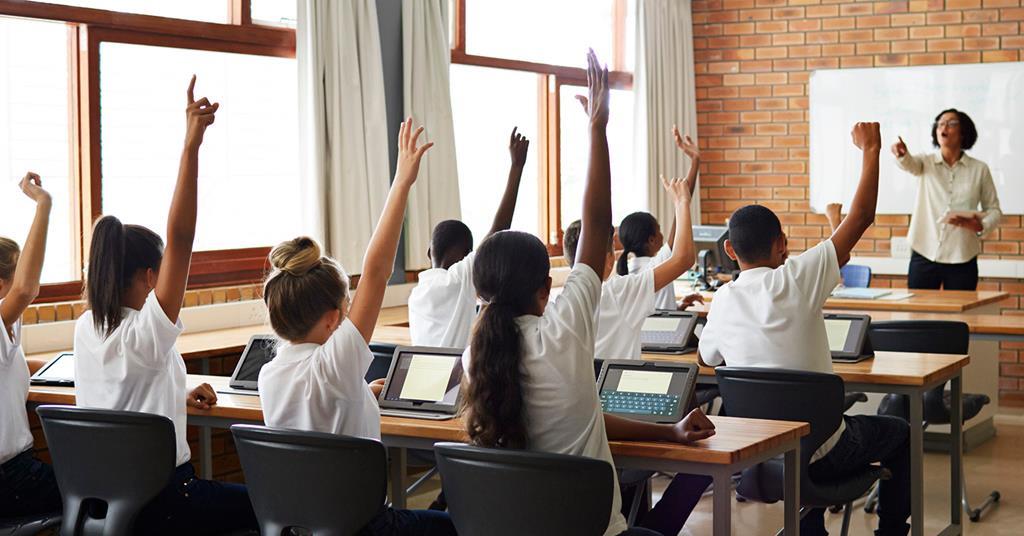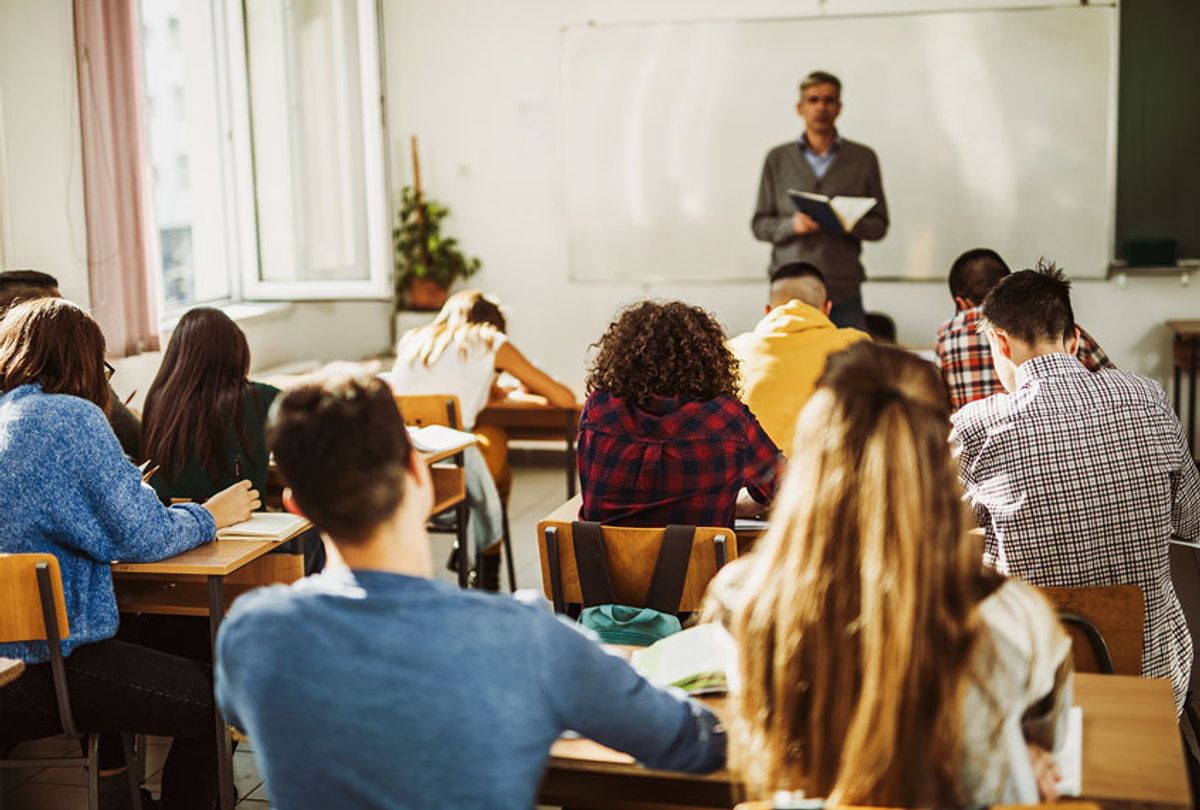Boost Your Child’s Confidence with Primary Science Tuition Singapore
Boost Your Child’s Confidence with Primary Science Tuition Singapore
Blog Article
A Comprehensive Overview to the Numerous Understanding Methods in Main Science Direction
The exploration of diverse discovering approaches in main scientific research guideline provides a chance for teachers to enhance trainee engagement and understanding dramatically. By analyzing hands-on understanding methods, inquiry-based strategies, and joint strategies, we can determine effective techniques that satisfy numerous discovering styles. In addition, the assimilation of technology and separated direction plays an important function in cultivating a comprehensive atmosphere. Nonetheless, the inquiry remains: exactly how can these approaches be efficiently applied in the classroom to optimize their effect? The solution hinges on a closer examination of each technique and its implications for teaching science.

Hands-On Understanding Techniques
Hands-on learning strategies play a critical duty in main scientific research direction, engaging trainees in active exploration and experimentation. These approaches enable students to interact straight with products and sensations, fostering a much deeper understanding of clinical ideas. By utilizing manipulatives, versions, and real-life experiments, teachers develop an environment where pupils can observe, assume, and examine their ideas.
Such methods not only improve understanding however likewise grow critical reasoning and analytic abilities. When pupils take part in tasks like developing basic devices, growing seeds, or performing chain reactions, they are urged to ask inquiries and seek responses through their own observations. This experiential strategy aids to debunk complex scientific concepts, making them more relatable and obtainable.
Furthermore, hands-on learning promotes partnership amongst peers, as pupils frequently operate in groups to perform experiments or share searchings for. This teamwork not only enriches their discovering experience yet also creates crucial social abilities. Inevitably, incorporating hands-on strategies in key scientific research guideline fosters a long-lasting love of understanding and inquisitiveness regarding the environment, laying a solid foundation for future scholastic quests in scientific research and beyond.
Inquiry-Based Learning
Inquiry-based discovering is an educational technique that motivates pupils to ask questions, examine sensations, and build their very own understanding of clinical ideas. This method moves the focus from traditional teacher-led guideline to a much more student-centered experience, where students take the initiative in their academic trip. By cultivating curiosity, inquiry-based learning advertises much deeper engagement with the product, allowing students to explore subjects in a meaningful context.
In method, this technique often entails hands-on experiments, monitorings, and essential reasoning tasks that align closely with the clinical approach. Trainees are urged to create hypotheses, design investigations, and evaluate data, which cultivates crucial skills such as analytical and analytic reasoning. The function of the instructor in this structure is to facilitate exploration, directing trainees via the inquiry process while encouraging independent idea and collaboration.
Additionally, inquiry-based knowing supports a feeling of ownership over the learning procedure, motivating students to go after expertise actively. This approach not only enhances understanding of clinical ideas however additionally cultivates a long-lasting love for learning, outfitting trainees with the skills necessary to navigate a significantly intricate world.
Collaborative Knowing Approaches
Collaborative understanding approaches equip trainees to involve in purposeful interactions with peers, promoting a shared duty for their educational end results. In key scientific research direction, these techniques encourage students to interact to explore scientific ideas, fix issues, and conduct experiments (primary science tuition Singapore). By getting involved in team activities, pupils can take advantage of varied perspectives, enabling for richer understanding and retention of scientific knowledge
One key element of collective understanding is the focus on communication skills. Students need to articulate their ideas, pay attention proactively to others, and negotiate concepts, every one of which are critical expertises in both real-world and scholastic contexts. This social interaction not only boosts their understanding of scientific principles but likewise advertises teamwork and dispute resolution abilities.
Moreover, collective discovering typically leads to enhanced motivation and engagement. They are a lot more likely to take possession of their understanding journey when students see the value of their payments within a group. Educators can facilitate this procedure deliberately organized team jobs that line up with educational program goals while offering assistance on reliable collaboration methods. Overall, including collective learning methods in primary science instruction cultivates a vibrant discovering atmosphere that prepares students for future scholastic and social challenges.
Technology Integration in Science
The assimilation of technology in main science guideline improves learning experiences by offering cutting-edge devices and resources that sustain numerous training approaches, including collective knowing - primary science tuition Singapore. Using electronic systems, simulations, and interactive applications permits trainees to involve deeply with scientific ideas, helping with a much more hands-on method to discovering
Virtual laboratories, for instance, make it possible for learners to conduct experiments safely and efficiently, advertising inquiry-based learning. These tools can replicate real-world scientific situations, allowing pupils to picture complex procedures that would be tough to replicate in a traditional classroom setting. Innovation fosters communication and collaboration among pupils, as they can share findings and work together on tasks via online systems.
In addition, multimedia discussions and educational videos can enhance lessons by dealing with varied knowing resource styles, making abstract principles more accessible. Information analysis tools also encourage trainees to accumulate and translate clinical information, strengthening vital assuming abilities. On the whole, the critical consolidation of modern technology in primary scientific research direction not just boosts involvement however likewise prepares pupils for a highly innovative society, equipping them with necessary abilities for future clinical undertakings.
Separated Guideline Methods
Separated direction strategies are necessary for dealing with the varied needs of students in main scientific research education. These techniques allow educators to customize their training approaches to accommodate differing capabilities, rate of interests, and learning designs within the classroom. By employing separated guideline, teachers can produce a comprehensive environment that fosters engagement and improves understanding of clinical concepts.
One efficient technique is to make use of versatile organizing, which allows trainees to team up with peers at similar skill levels or with varying perspectives. This strategy urges peer learning and advertises vital reasoning. Furthermore, providing choices in projects can equip trainees, allowing them to pick tasks that resonate with their passions while still fulfilling curricular purposes.
Furthermore, incorporating tiered jobs is an additional valuable method. By creating tasks with differing degrees of intricacy, instructors can make sure that all pupils are properly tested, no matter their effectiveness. Utilizing developmental evaluations to determine understanding more allows teachers to adjust their instructional approaches dynamically, ensuring that each learner obtains the support they require.
Eventually, applying differentiated instruction strategies in main science education and learning not only enhances student understanding results but also cultivates a passion for scientific research, preparing trainees for future academic searches.

Conclusion
In summary, efficient key scientific research you can check here direction demands a multifaceted approach that incorporates hands-on discovering, inquiry-based approaches, and collaborative techniques. The combination of technology and distinguished guideline further caters to varied discovering styles, fostering a setting helpful to expedition and important thinking.
The expedition of diverse understanding methods in main science guideline presents a chance for educators to improve trainee interaction and comprehension significantly.Hands-on discovering methods play a critical function in main science direction, involving pupils in active expedition and trial and error.Inquiry-based learning is an instructional method that motivates pupils to ask questions, investigate sensations, and create their very own understanding of clinical concepts.Collaborative discovering strategies equip pupils to involve in significant communications with peers, cultivating a common duty for their academic end results. Look At This Overall, including collective discovering approaches in main scientific research guideline cultivates a vibrant learning setting that prepares trainees for future scholastic and social difficulties.
Report this page